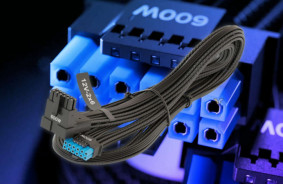NVIDIA has acknowledged the issues with Intel Core 13 and 14 processors with its graphics cards. Typically, this is stability violations or video memory errors that occur during shader compilation in games. However, on the page dedicated to the changes of driver version 552.12 NVIDIA advises users to contact Intel, which has already created a special site to address these issues.
“If you are using an unlocked desktop Intel 13th or 14th generation processor and experiencing stability issues, video memory shortage messages, or crashes to the desktop during shader compilation, seek help in resolving the issues on the following sites:
https://community.intel.com/t5/Processors/Regarding-Reports-of-13th-14th-Gen-Unlocked-Desktop-Users/td-p/1575863?profile.language=en
https://www.radgametools.com/oodleintel.htm».
The Intel site has been operational since the end of February. Despite Intel acknowledging the flaw and collaborating with partners to investigate cases, the company has not yet made a public statement or provided a final solution.
The problem primarily occurs in games on Unreal Engine 5. The instability of Intel processors is sometimes attributed to their high frequencies, which distinguish the K series. These are the fastest processors among Intel chips, and issues mainly arise with the fastest Core i9 models. Currently, only the Raptor Lake and Raptor Lake Refresh series are mentioned in reviews (which are models of the 13th and 14th generations of the Core i9).
Suggestions in the community for overcoming the problem include reducing the clock frequency or lowering the processor voltage. However, it seems that Intel should seek a permanent solution.
The Tom's Hardware site discovered that the partners of Intel in motherboard production are to blame in the situation. Almost all Intel partners automatically limit the processor power to 4096W (or infinity) out of the box. This behavior has been consistent over several generations, but only now it is causing mass problems with the fast, hot, and power-hungry architecture of Intel Raptor Lake processors.
The problem with the 4096W power limit configuration is that this specification is not defined by Intel by default for any of the processors. In fact, Intel's actual limit for most processors is significantly below 200W and is close to the processor's TDP. Intel does not test its processors using "unlimited" power, so such values can be considered unpredictable "overclocking."
Sources: NVIDIA, VideoCardz, Tom`s Hard














Comments (0)
There are no comments for now